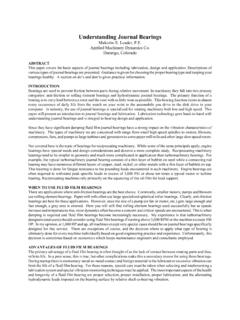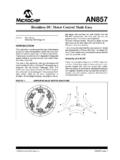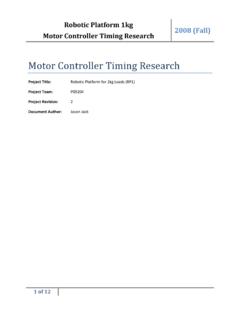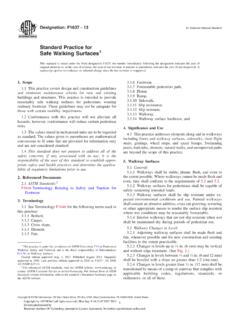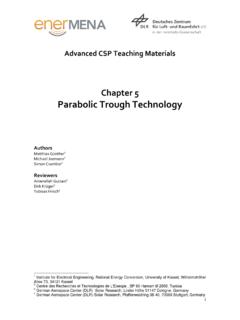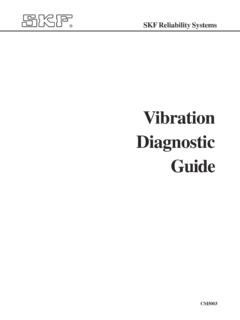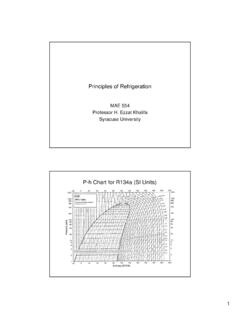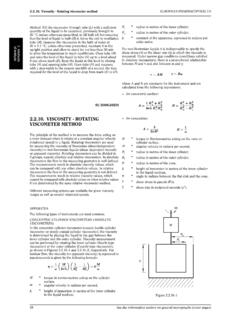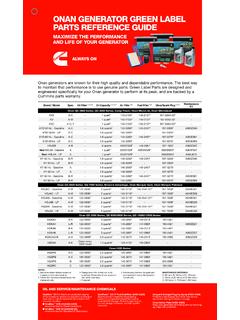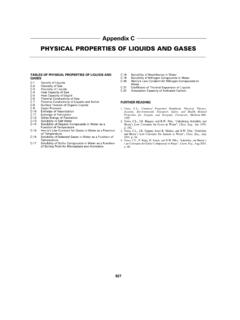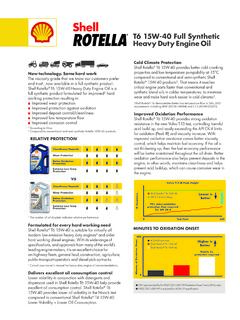Transcription of Viscosity of Glycerol and Its Aqueous Solutions
1 September 1951 INDUSTRIAL AND ENGINEERING CHEMISTRY 2117 Rillman, G. W., Sage, B. H., and Lacey, W. S., I' Am. Inst. Bridgeman, 0. C., J. Ana. Chem. Soc., 49, 1174-83 (1927). Farrington, P. S., and Sage, B. H., INI). ENG. CHE~I., 41, 1734-7 Kay, 1%'. B., Ibid., 30, 459--65 (1938). Kuenen, J. P., "Theorie der Verdamgfung und Verflllssigung von Gemischen und der Fraktionierten Destillation," Leip- zig, J. 8. Barth, 1906. Met. Engrs., 174, 13-24 (1948). (1949). Lewis, G. N., J. A7n. Chem. Soc., 30, 668-83 (1908). Lu, H., Newitt, D. M., and Ruhemann, M., Proc. Roy. SOC. Marchman, H., Prengle, H. W., Jr., and Motard, R. L., IND. McMillan, W. A., Cole, H. A., and Ritchie, -4. V., IWD. ENG. Prengle, H. W., Jr., and Marchman, H., IND. ENG. CHEM., 42, (London), Series A, No. 975, 178, 506-24 (1941).
2 ENG. CHEM., 41, 2658-60 (1949). CHEM., ANAL. ED., 8, 105-7 (1936). 2371-4 (1950). (16) Reamer, H. H., Olds, R. H., Sage, 13. and Lacey, W. N., (17) Reamer, H. H., and Sage, B. H., "Volumetric and Phase Be- Ibid., 36, 956-S(1944). havior of the Prouene-Prouane Svstem." to be Dublished. (18) Sage, B. H., and Lacey, W: X., 7%ans. Am. Ins;. Mintnu Met. (19) Ibid., 174, 102-20 (1948). (20) Sage, B. H., and Lacey, 11'. S., IND. EKG. CHEM., 40, 1299-301 Engrs., 136, 136-57 (1940). (1948). (21) Sage, B. H., and Lacey, W. N., "Thermodynamic Properties of the Lighter Paraffin Hydrocarbons and Nitrogen," , 1950. (22) Sage, B. H., and Lacey, W. N., Petroleum Refiner, 29, 123-7 (1950). (23) Vaughan, W. E., and Graves, S. K., IXD. ENG. CHEM., 32, 1252-6 (1940). (24) Winkler, C.
3 A., and Maass, O., Can. J. Research, 9, 610-29 (1933). RECEIVED March 6, 1951. Viscosity of Glycerol and Its d J Aqueous So J. B. SECUR AND HELEN E. OBERSTAK The Miner Laboratories, Chicago 6, Ill. Viscosity data for Aqueous gl>cerol Solutions in the range of 0" to 100" C. and 0 to 100% concentration have been reported by various authors, each working within limited temperature or concentration ranges. Different types of viscometers were used. As a result there are gaps and inconsistencies in the data. The viscosit? data reported here were obtained with a single type of viscometer over the entire range of 0" to 100' C. and 0 to 100% Glycerol concentration. The data will be useful in the design and use of Glycerol - handling equipment. They also make it possible to use Aqueous Glycerol Solutions as Viscosity standards over a wide range of Viscosity and at temperatures from 0' to loo" a=.
4 'SERE have been several studies of Glycerol Viscosity for limited ranges of conceriti ations and temperatures . How- ever, there has been no extensive study of Aqueous Glycerol solu- tions over 0" to 100" C. temperature range using a single type of viscometer. Herz and Wegner (12) measured the Viscosity of Glycerol Solutions of 10 to 92% concentration at temperatures From 10' to 80' C. Their results were published in terms of both relative and absolute Viscosity . Archbutt and Deelev (2) made careful Viscosity measurements of Glycerol Solutions at 20' C. The capillary of their viscometer had a diameter of mm. and a length of cm., with square ends. The hydrostatic head was increased by a supplementary tube attached to the capillary when the more viscous Solutions were used.
5 Darke and Lewis (10) measured the relative Viscosity of glyceiol Solutions of 10 to 92% concentration at 1' C. They did not record the specific gravities of their Solutions , nor did they state how the Viscosity measurements were made. They published their data together with the relative Viscosity data of Herz and Wegner to make a comprehensive tabulation. Cocks (9) combined other published data with those published by Darke and Lewis and addrd some original data obtained with a standard Redwood vis- cometer to make a compilation covering most of the points from 1' to 100" C., and from 0 to 99% of Glycerol . The data are given in terms of poises. There are a number of inconsistencies in the at)ove data, particularly in the regwn of tempcratureq ahovc 70" C. Sheely (16), using a viscometer of the type described by Bingham and Jackson (4), in which pressure on the liquid was controlled by a regulated air supply, made very careful measure- ments of the Viscosity of Glycerol Solutions of 0 to 100% concen- trations and at the temperatures of 20", ", 25", ", and 30" C.
6 Mtiller (IC) published Viscosity values for water and five concentrations of Glycerol at temperatures from 17" to 90" C. Vand (Ill), using Ostwald viscometers, determined the Viscosity of Glycerol Solutions of and concentrations at ten temperatures from 80" to 167" 6. Green and Parke (11) meas- ured the viscosities of Glycerol Solutions at temperatures from 0" to -40" C., within the limits of the freezing points of the Solutions . Tammann and Hesse (17) measured the Viscosity of Glycerol at temperatures from -42' to " C. The Viscosity of pure Glycerol at pressures up to 12,000 kg. per sq. cm., at 30' C., was measured by Bridgman (6). The present work was done to correct some inaccuracies in the previous data, to provide data where none were available, and to provide a series of consistent Viscosity data all obtained with the same type of viscometer, within the limits of 0" to 100" C.
7 , and 0 to 100% Glycerol concentration. Glycerol AND Glycerol Solutions A selected sample of Glycerol was distilled from a 5-liter flask through a 25-cm. Vigreux column. The column was con- nected to the flask with a standard-taper ground-glass joint. The middle portion of the distillate, boiling point 140" C. at 1 mm., weighing 4330 grams, xas taken for use. Its specific gravity at 25/25' C. was , which corresponds to of Glycerol by weight. The Glycerol -water Solutions were prepared by mixing calcu- lated weights of Glycerol and of distilled water which had been recently boiled and cooled. The actual concentrations were de- termined from their specific gravities at 25/25' C. Two Geissler 25-ml. pycnometers were used. Duplicate tests were made with each solution, one test with each pycnometer.
8 The equivalent Glycerol concentrations were obtained from the data of Bosart and Snoddy (5). The maximum difference between duplicate determinations was equivalent to Glycerol . The average difference was The concentrations of the Solutions wvcre Downloaded by UNIV ILLINOIS URBANA on September 3, 2009 | Publication Date: September 1, 1951 | doi: 18 INDUSTRIAL AND ENGINEERING CHEMISTRY Vol. 43, No. 9 TABLE I. CALIBRATION OF VISCOMETERS AT 20" c. Vis- cometer Time, Solution Abaolute Kinematic Viscometer Solution No. ' Sec. Density Viscosity Viscosity Water 50 G1 cerol, yo go. 02 50 100 100 200 300 300 400 1934 0 623,50 0. oi503 0,0902 0,2577 , , , , , , , , , , , , , , , , , , , and The Solutions with 50% or less of Glycerol were stored at 5" to 10" C.
9 To prevent mold growth. APPARATUS The viscometers used were the No. 50, 100, 200, 300, and 400 sizes of the modified Ostwald viscometers described by Cannon and Fenske (7, 8). Specifications and directions for use are also given by the American Society for Testing Materials (ASTM) (I). The viscometer to be used for a test was selected so that the efflux time of the liquid would be at least 200 seconds, and for convenience, not over about 800 seconds. At temperatures above 60' or 70" C. evaporation of water from the solution in the viscometer became appreciable. To reduce such evaporation an inverted U-tube was attached to the two ends of the viscom- eter short pieces of rubber tubing. Connected to the U-tube were stopcocks arranged so that the solution could be blown into the upper bulb of the viscometer preparatory to a test.
10 Exce t when the solution was being transferred to the upper bulb, tie system was kept closed. The internal pressure was the same as the atmosphenc pressure, and the passa e between the ends of the viscometer was open. Even with &ese precautions there was some slight loss of water from the Solutions as vapor con- densed in the cooler arts of the tube above the thermostat bath. The amount of confensate varied from a trace to perhaps two drops when the more dilute Solutions were heated to the higher temperatures . Because of this progressive loss of water, only five individual readings were taken to obtain an average value in such caaes. The thermostat could hold four viscometers, and it was fre- quently convenient to have several viscometers in operation at one time.

